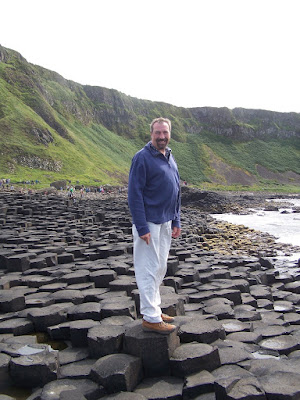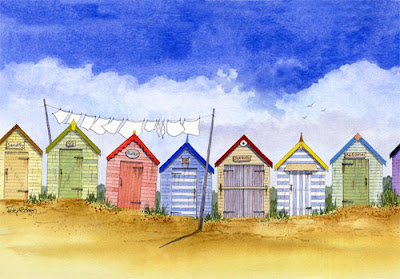Peter Bowen discovers the Antrim Coast
This is one of the most interesting and scenic coastlines in the United Kingdom. There is lots to see and do including castle ruins, tour the world's oldest whiskey distillery, discover small harbours, and hike along the famous Giant's Causeway (a World Heritage Site).

Dunluce Castle
These romantic ruins, perched dramatically on the edge of a rocky headland, are testimony to this region's turbulent past. During the Middle Ages, the castle resisted several sieges.
On a stormy night in 1639, dinner was interrupted as half of the kitchen fell into the sea, taking the servants with it. That was the last straw for the lady of the castle. The countess of Antrim packed up and moved inland, and the castle "began its slow submission to the forces of nature."
While it's one of the largest castles in Northern Ireland and is beautifully situated, only ruined walls are left standing today but well worth a visit.
The 16th-century expansion of the castle was financed by the salvaging of a shipwreck. In 1588 the Spanish Armada's Girona sank on her way home after an aborted mission against England, laden with sailors and the valuables of three abandoned sister ships. More than 1,300 drowned, and only five washed ashore. (The shipwreck was excavated in 1967, and a bounty of golden odds and silver ends wound up in Belfast's Ulster Museum.)

Old Bushmills Distillery
Bushmills is the world's oldest distillery. Though King James I (of Bible fame) only granted its license to distill "Aqua Vitae" in 1608, whiskey has been made here since the 13th century. Distillery tours waft you through the process, making it clear that Irish whiskey is triple distilled — and therefore smoother than Scotch whisky (distilled merely twice and minus the "e"). The finale, of course, is the tasting in the 1608 Bar — the former malt barn.

Giant's Causeway
This four-mile-long stretch of coastline is famous for its bizarre basalt columns. The shore is covered with hexagonal pillars that stick up at various heights. It's as if the earth were offering God his choice of 37,000 six-sided cigarettes.
Geologists claim the Giant's Causeway was formed by volcanic eruptions 60 million years ago. As the lava surface cooled, it contracted and cracked into hexagonal shapes. As the layer of hardened but alligatored rock settled, it broke into its many stair steps.

During the late nineteenth century Ballintoy harbour was extensively used for the shipping of sett stones, a small rail track existed for moving the piles of sett stones and limestone to the quayside. At Brockie Quarry near Larry Bane over one hundred men were employed chipping and shaping sett stones that went to pave the streets of cities such as Dublin, Cork, Wexford, Limerick and Glasgow. The well built lime kiln stands as a testament to the harbour's industrial past, burnt lime would have been drawn away by horse and cart to help build the numerous stone cottage and rural halls in the district.
Ballintoy is still a working harbour for local fishermen who continue a tradition that goes back to when man first arrived, it naturally produces good boatmen due to the dangerous waters which they and their father's have come to understand, respect and work upon. The large boat cave to the right of the car park would have been used to repair, lay over and build boats inside. Though the scores of basalt islands act to shelter the harbour from prevailing storms, it can still on occasions get battered.
 The area of rocks nearer White Park Bay and overlooked by Dundriff is known locally as the Park End, this spot can pick up some of the biggest swell waves along the north coast. The harbour mouth looks out to Sheep Island and Rathlin. In October, 1906 the 'City of Bristol' a steam powered Fleetwood trawler homebound from Iceland ran aground on the reef that runs between Larry Bane and Sheep Island - there was thick fog at the time and the Captain mistook Sheep Island for Bull Point on Rathlin.
The area of rocks nearer White Park Bay and overlooked by Dundriff is known locally as the Park End, this spot can pick up some of the biggest swell waves along the north coast. The harbour mouth looks out to Sheep Island and Rathlin. In October, 1906 the 'City of Bristol' a steam powered Fleetwood trawler homebound from Iceland ran aground on the reef that runs between Larry Bane and Sheep Island - there was thick fog at the time and the Captain mistook Sheep Island for Bull Point on Rathlin. 



Comments
Debbie